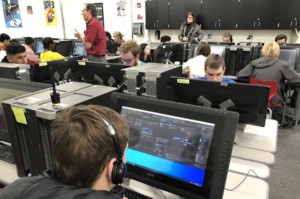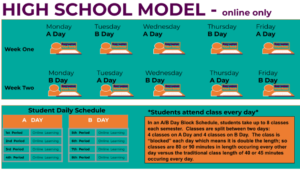How Canadian Districts are Navigating EdTech Acquisition

Jason Ribeiro
The perils of poor technology leadership and complicated procurement processes are well documented when it concerns EdTech technology spending. Uneasiness regarding current acquisition practices has also been noted north of the U.S. border where Canadian districts are beginning to feel the heat from concerned stakeholders. Notwithstanding the profound challenges associated with large-scale technology procurement, Ontario’s publicly funded school districts have made multimillion-dollar investments in EdTech, with spending showing no signs of slowing. Therefore, there was a need for a research study that sought to determine if the technology procurement process in Ontario’s publicly funded school districts was aligned with the relevant research, grounded in best practices, and enhances student learning.
In partnership with Brock University, I recently examined the procurement, governance, assessment, and ROI measures utilized by 10 Ontario school districts (total student population of 746,000) in their implementation of educational technology. The following question was central to the study:
What are the most important factors senior leaders consider when procuring EdTech? Is this supported by relevant research?
To answer this question, I compared and contrasted the reasons districts purchase technology against its research-validated model that emerged from a review of the literature.
Strategic Model for Technology Decision-Making
The model was developed by consulting both academic and professional literature and identified the following areas of exploration:
- Academic Impact of Technology on Student Learning
- Teacher Training
- Increased Student Engagement
- Collaboration
- Data-Driven Decision-Making (DDDM)
- Timeliness
- Accessibility
- Capacity
- Technology Procurement and Spending
- Total cost of Ownership (TCO)
- Organizational Vision
- Efficacious Funding
Many of the essential components of the model echo the 12 keys featured in the “Smart Series Guide to EdTech Procurement.” Both frameworks are used as a basic expectation of senior leaders who are making technology decisions at the district level.
The data revealed that the senior leaders (either CIOs or Superintendents) considered many of the same factors when acquiring technology for their school districts. They all acknowledged numerous challenges in determining what technologies to purchase for their stakeholders. Participants were asked to identify and rank the most important factors they consider when procuring technology for their school districts. The most common responses (in terms of frequency) were:
- Cost-Related Factors
- Impact on School Board Infrastructure
- Product Specifications
- Alignment with Technology Plan/Organizational Vision
- Impact of Technology on Instruction and Student Learning
The findings revealed that cost-related factors are the most important concerns senior leaders have when acquiring technology for their school district. While the importance of financial considerations is highlighted in the research model, they should not be driving technology acquisition.
The finding that product specifications weigh heavily in participants’ acquisition decisions is not explicitly noted in the model. While I am aware that hardware and software problems are frequent occurrences in school districts, this heavy focus on product specifications only further extends the notion that district leaders are squandering opportunities to make real connections between technology and learning.
A few participants recognized the importance of their district’s technology plan/organizational vision, however none noted that the overall vision had been informed by the entire organization. ISTE (2009) implores senior leaders to utilize proactive leadership in developing a vision that incorporates all education stakeholders. Perhaps the absence of this meaningful engagement is why some leaders are having difficulty getting their stakeholders to buy in to their technology plans/policies.
An emphasis and focus on technology’s impact on instruction and student learning during acquisition is strikingly limited in the data collected from senior leaders. This is highly inconsistent with the current literature on supporting student learning through technology and this study’s research model. Without a focus on pedagogy and student learning, school leaders and their districts risk being exposed to numerous challenges.
With districts feeling pressured by stakeholders to quickly get technology into their classrooms and the competition for provincial (or state) funding growing steadily, the roles and responsibilities of senior leaders are becoming increasingly complicated. The problem lies with the fact that school leaders have become so focused on not being seduced by the shiny allure of classroom technology that they are ignoring/undervaluing the pedagogy and the product’s impact on student learning. This is misguided and highly dangerous when you consider the price districts have had to pay for taking the same approach (i.e., poor usage rates, millions of dollars wasted, etc.). Yet while we are right in our reluctance to chase technology for our school systems, we should instead be sprinting towards establishing best practices and leveraging personalized learning opportunities for our students. With progressive leadership that places student learning at the helm, we may be able to catch up after all.
For more on this study, check out:
- Educational Technology Decision-Making: A Case Study on Technology Acquisition for 746,000 Ontario Students (Full Document)
- Smart Series Guide To EdTech Procurement
- Navigating the Digital Shift: Implementation Strategies for Blended and Online Learning

Jason Ribeiro is a Ph.D. student at the University of Calgary in Alberta, Canada specializing in Educational Leadership. Follow Jason on Twitter at @jason_ribeiro.





0 Comments
Leave a Comment
Your email address will not be published. All fields are required.